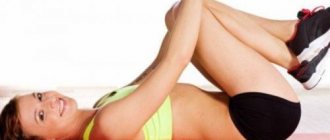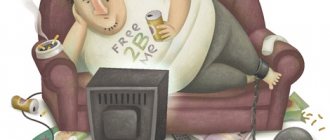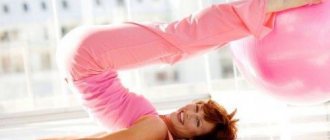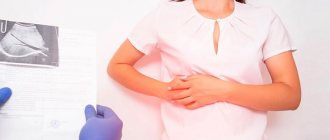It is not recommended for anyone to test the iron's strength - when its interests are not taken into account, it reacts harshly. Experts say: you should absolutely not overeat and do exercises on a full stomach. But special breathing exercises will help if you have signs of pancreatitis.
Directions of physical therapy for pancreatitis and cholecystitis
Some types of exercises for inflammatory diseases of the abdominal organs should be avoided:
- sharp body tilts;
- run;
- pull-ups;
- jumping;
- squats;
- abdominal exercises
Not all exercises that are suitable for patients with pancreatitis are indicated for cholecystitis and vice versa.
Therefore, it is better to draw up a complex with your doctor. Or, at least, it is necessary to coordinate the selected exercises with him. It is best to conduct the first few workouts under the supervision of a doctor or physical therapy instructor. This is necessary in order to determine the optimal load level and eliminate undesirable consequences.
The most effective areas for the treatment and prevention of exacerbations in inflammatory diseases are recognized:
- Breathing exercises are a system of breathing exercises that are aimed at improving the health of the body and treating the respiratory organs and gastrointestinal tract.
- Yoga, which initially consists of spiritual practice, which also includes physical exercises based on rhythmic gymnastics and aerobics.
- Pilates is a complex technique that includes elements of oriental practices and involves calm physical activity without overexertion.
- Static muscle training includes exercises that involve holding the body in a stationary position with muscle tension.
- Swimming optimally combines physical impact and water pressure, giving the body a therapeutic load.
- Nordic walking is a type of physical activity that involves a special walking technique using poles.
- Qigong involves a set of exercises with smooth, continuous movements that are synchronized with breathing.
- Callanetics is a static exercise aimed at alternating contraction and stretching of muscles.
For cholecystitis and pancreatitis, calm, smooth and static exercises without sudden jerks and significant force loads are recommended.
Features of the disease
Pancreatitis is an inflammatory disease of the pancreas associated with impaired discharge of digestive enzymes and manifested by the appearance of acute abdominal pain, heaviness, and nausea.
Cholecystitis is a disease that results in inflammation of the walls of the gallbladder, resulting from a violation of the outflow of bile into the small intestine.
Treatment of these diseases is aimed at restoring optimal functioning of the organ, as well as relieving symptoms and signs of the inflammatory process. The best effect in treating these inflammatory processes is drug therapy, which allows you to influence the cause of inflammation.
Therapeutic exercises play an important role during the recovery period, as well as to maintain the functioning of organs in normal condition. In addition, gymnastics for pancreatitis and cholecystitis is a reliable and proven method of preventing exacerbation of chronic manifestations of the disease.
This article will help you understand what exercises affect the relief of symptoms of inflammation of the abdominal organs, whether there are contraindications for therapeutic exercises, and how to properly train for pancreatitis and cholecystitis for the best effect.
When can you start training?
Engaging in physical therapy for pathologies of the pancreas and gall bladder is allowed only during the period of remission. When the symptoms of the disease cease to bother you and the patient feels well, you can begin training. They must be agreed upon with the attending physician, regular and not cause pain.
It is necessary to monitor your condition during training. Pain in the epigastric region indicates that the lesson needs to be completed. From the set of exercises, you need to exclude all exercises that cause pain, or reduce the intensity of the load.
In acute cases of illness, physical therapy is prohibited. During an exacerbation, it is also unacceptable. These conditions require medication and a special diet. You can start exercising only after the end of the acute period.
"Eating" itself
The pancreas has hundreds of enemies. It can become inflamed after an injury to the abdomen, even if it was hit with a volleyball or tennis ball, due to colds, flu and herpes, as well as against the background of appendicitis, gastritis, food allergies, overeating and poor nutrition with a predominance of fatty and sweet foods. If you quarreled with your loved one, had a fight with your boss, are overtired or are under stress, your chances of developing pancreatitis increase sharply.
During the day, the pancreas produces almost 800 g of pancreatic juice, which has enormous digestive capacity. It contains components that break down fats (lipase), proteins (trypsin) and carbohydrates (amylase).
To protect itself from “self-digestion,” the gland produces substances that suppress the activity of its own enzymes. Normally, they gain strength when they enter the intestines and mix with food. If for some reason the enzymes are activated prematurely, the gland is damaged.
The anatomy, which is predisposing to pancreatitis, helps to turn on the “self-digestion” mechanism. The fact is that the ducts through which pancreatic juice and bile enter the duodenum merge into a single ampoule when they flow into it.
If the pressure in it increases sharply (this happens when bending over, sports training on a full stomach, overeating), bile is thrown into the pancreas, activates its enzymes and starts the process of self-destruction, leading to inflammatory-destructive syndrome.
On the edge of a knife
The main signs of acute pancreatitis are excruciating girdling pain in the upper abdomen (epigastric region), usually radiating to the back, nausea, vomiting, bloating, and weakness. If such symptoms occur, call an ambulance immediately.
Before the doctor arrives, refrain from eating and drinking - they contribute to additional irritation of the pancreas. Apply a heating pad with cold water or an ice pack wrapped in a towel to the sore area.
Do not take any medications before the doctors arrive - they “blur” the clinical picture and complicate diagnosis. To reduce pain, lie down in bed and relax your abdominal muscles.
Do not refuse treatment in the hospital, even if it seems that it has become easier. In acute pancreatitis, there is a short period of imaginary well-being, after which the disease returns with a vengeance.
Chronic pancreatitis develops from acute pancreatitis with untimely treatment or immediately forms as an independent disease. When it worsens, which usually occurs after festive feasts, pain occurs in the upper half of the abdomen, more on the left, radiating to the back.
Appetite disappears, nausea, vomiting, as well as copious, thick, clay-like bowel movements appear. In this case, various pancreatic enzymes are prescribed, as well as a diet without fat and with a reduced carbohydrate content.
Basic breathing exercises
5 exercises for pancreatitis and cholecystitis are the basic basis on which therapeutic complexes for exercises for these diseases are built. These exercises are based on breathing exercises, which help improve blood circulation and restore the outflow of enzymes from organs. Basic exercises are universal, you only need to perform them for a few minutes, but they should be repeated 2-4 times a day. They should be performed while sitting, breathing slowly and evenly.
5 exercises for pancreatitis and cholecystitis are performed in order:
- First you need to take a slow and deep breath. Then draw in your stomach, hold your breath for 5-10 seconds, exhale slowly and smoothly. Now you can relax your stomach. It is recommended to do the exercise 2 to 5 times.
- You need to start with a slow and deep breath. Now you need to stop, inflate your stomach and hold your breath for 5-10 seconds. Now you can exhale smoothly and relax your stomach. The exercise is repeated 2 to 5 times.
- Again, you should take a slow breath, stop for a moment and tense your stomach. Staying in this position for a few seconds is enough, then you need to inhale more air and you can exhale smoothly, relaxing the muscles. This should also be repeated 2 to 5 times.
- Now you need to inhale quickly and sharply, tense your stomach and exhale intensely, relaxing your abs. You can repeat from 2 to 5 times.
- The vacuum helps strengthen the abdominal muscles and normalize the functioning of internal organs. It is done in a standing position. First you need to take a deep breath into your stomach. Then, exhaling very smoothly, pull your stomach under your ribs as much as possible. You need to stay in this position for as long as possible, but 5-8 seconds will do for a start. You need to relax your stomach at the same time as you exhale. When exhaling, you should open your mouth and noisily release the air with the characteristic sound “groin!” Repeat 2 to 5 times.
If you feel unwell and feel dizzy, it is better to stop training. Although it is worth noting that people who engage in breathing exercises for the first time often experience dizziness. This occurs due to an increase in the amount of oxygen in the blood, which is completely normal. But if there is significant discomfort and poor health, you should stop exercising and consult your doctor.
Prevention of pancreatic diseases
To prevent relapses of the disease, respiratory exercises and simple elements of morning exercises are widely used, which it is advisable to perform every day. Oriental practices and classes in the pool are suitable for weekly training.
Morning exercises and breathing exercises
Breathing exercises are recommended for pancreatitis from a very early period, as it is both safe and effective. You should exercise 2 times a day. Starting position - lying on your back, arms along your body, legs slightly bent at the knees.
- Take a full breath, completely release the air through your nose, inflate your stomach and hold your breath for three seconds.
- Inhale as deeply as possible, then slowly exhale through your nose, strongly drawing in the anterior abdominal wall.
- Now we breathe with the “belly”: as you inhale, it swells, and as you exhale, it retracts significantly.
- Take half a breath, freeze for a couple of seconds, then inhale completely, sticking out your stomach, and stop breathing again for 2-3 seconds. Exhale slowly for 5-6 seconds, contracting your abdominal muscles, then make another quick breathing movement with your stomach.
Do 10 -12 repetitions.
To normalize the blood supply to the abdominal organs and prevent congestion in the pancreatic ducts, every morning you need to start with a small exercise, including simple elements:
- Smooth turns and bends of the body;
- Rotation in the joints of the limbs;
- Walking in place.
This warm-up usually takes no more than 10-15 minutes.
Exercise vacuum
The following exercise can be done at any stage of treatment, you just need to choose a comfortable starting position:
- Standing in a slight tilt and resting your palms on the tabletop;
- Crouching slightly and resting your hands on your hips;
- Leaning on your palms and knees;
- Lying in bed with your legs slightly bent.
Technique: take a normal inhale, followed by a maximum exhalation. At the same time, the stomach is strongly retracted, as if “gluing” to the spine. Stop breathing in this position for four seconds. If possible, do 10 approaches.
Visceral-diaphragmatic-osteopathic massage
This technique is based on the anatomical proximity of the pancreas to the diaphragm. Due to their close proximity, the diaphragm “massages” the pancreas, moving in a certain way. This effect improves blood and lymph circulation in the abdominal cavity and normalizes the motility of the gastrointestinal tract.
- We slowly inhale through our nose, imagining how the air fills first the lower abdomen, then the middle part, the subcostal spaces, and finally the lungs. The abdominal and chest walls should move in accordance with these stages of filling.
- We pause for a couple of seconds.
- Now we exhale gradually, removing the air from the body in the reverse order.
- We hold our breath again.
- Without inhaling, we imitate 4 quick breathing movements with the chest, without involving the abdomen.
- Now, at the same high pace, we imitate abdominal breathing 4 times.
- Let's breathe in deeply.
Note!
At first, it can be difficult to properly perform such a massage due to the need to hold your breath for a long time. You should not try to fulfill it at any cost. You can take a breathing pause for a shorter period without causing discomfort.
Exercises to improve the health of the pancreas
5 exercises for pancreatitis and cholecystitis must be performed taking into account their purpose. Not all exercises suitable for the treatment of one pathology are suitable for another. For those who doubt their ability to independently compose the necessary complex, several effective and simple exercises have been selected to improve the health of the pancreas.
You can do them in any order:
- Walk on your toes for up to a minute, then rest. Repeat 3-5 times. You need to rise on your toes as high as possible, without lowering your head. Place your hands on your waist.
- Walking with legs raised. There is no need to bend your knees; the straight leg rises. You should try to pull it as high as possible. The duration of the exercise is up to 1 minute. Repeat 3-5 times.
- The exercise is performed in a lying position. Legs bend at the knees, arms along the body. You need to make circular movements with your legs, imitating riding a bicycle, for about 30 seconds, then return to the starting position. Repeat the exercise 3-7 times.
- Starting position: lying on your side, legs straight. It is better to place the hand that touches the floor under your head. You can rest your upper hand on the floor. Now you should do 3-5 lifts of the upper leg. You need to lift slowly, smoothly, but as high as possible. Then lie on the other side and repeat the same with the next leg. Repeat the exercise on both sides 3-5 times.
- In a standing position, arms along the body, smoothly and simultaneously raise them above your head, and then lower them. You need to do this 3-7 times.
It is worth noting that the indicated number of exercises is conditional. If you can complete them only once, then that’s enough. If pain occurs, it is better to stop training.
Diet after an attack
For a month after an exacerbation of pancreatitis, follow a gentle diet that reduces the load on the pancreas:
- exclude strong broths, fatty, spicy and sour dishes, sausage, sausages, sausages, offal, smoked meats, sauerkraut and other pickles, canned food, caviar and fatty fish (stellar sturgeon, sturgeon, halibut, mullet, catfish, carp);
- nuts, mushrooms, legumes, brown bread, millet, fresh baked goods, cakes, pastries, caramel, ice cream, chewing gum, kvass, coffee, cocoa, chocolate, citrus fruits, carbonated drinks should be prohibited;
- do not get carried away with fresh fruits, which caring relatives usually feed to a sick family member. Vitamins, of course, are very necessary for a recovering body, but the strong juice effect of raw vegetables (especially white cabbage, radishes, turnips and rutabaga), greens (sorrel, spinach, lettuce) and fruits are not good for the pancreas. 1-2 bananas or sweet ripe apples without peel will not harm your health, but sour fruits are contraindicated, but baked apples, boiled, stewed vegetables are recommended.
Exercises for chronic pancreatitis
Upon analysis, at first glance, the 5 basic exercises seem too simple, but this fact does not negate their effectiveness. Patients diagnosed with cholecystitis and pancreatitis need to perform this complex consistently and regularly every day.
5 exercises for pancreatitis and cholecystitis will help cope with the disease.
Specifically, for chronic pancreatitis the following are recommended:
- First you need to take a lying position, put a small flat pillow under your head. Straighten your arms and press them to your body, bend your legs at the knees, place your feet on the floor. Now slowly and smoothly you need to slide your feet along the floor, straightening your legs until they take a lying position. After this, you can return to the starting position and do 3-7 repetitions.
- In a lying position, you need to bend your knees and, similar to the previous pose, place your feet on the floor. You need to press your knees together and smoothly tilt your knees alternately to the right and left, pressing them to the floor. In this case, naturally, the body will also tilt. You need to turn to the right, return to the starting position, then turn the body and knees to the left and return to the starting position again. Repeat this procedure 3-10 times in both directions.
- The last exercise is in a lying position. Arms and legs lie straight. First, you need to lift your right leg up until you get a 90-degree angle between your leg and body, then your left leg. They should also be returned to their original position one by one. The permissible number of repetitions is from 3 to 7.
- Position - sitting on a chair, legs bent at the knees at an angle of 90 degrees. One leg needs to be straightened slowly, while inhaling deeply. As you exhale, lower and bend the knee again. Then repeat the same procedure with the next leg. In total, the exercise can be performed from 3 to 10 times.
- In a sitting position, you need to raise your heels, standing on your toes and transferring your weight to them. Stay in this position for 5-15 seconds, tensing your abdominal muscles, and then you can relax and return to the starting position.
At the end of the workout, as a cool-down, you can do several of your favorite breathing exercises described above. In addition to these techniques, the treatment of pancreatitis is well promoted by slow walking, as well as walking on toes for about half a minute per repetition of the exercise. If you experience discomfort in the epigastric region, pain, poor health, dizziness and increased blood pressure, it is better to stop training.
What sports can you do?
During the period of remission, sports are not only allowed, but even necessary. However, not all workouts will be beneficial. Preference should be given to:
- Swimming;
- Nordic walking;
- Pilates - a fitness option in which all elements are performed at a slow pace;
- Skiing;
- Eastern practices (yoga, qigong).
The following activities can provoke an exacerbation:
- Run;
- Power training;
- Outdoor team games.
The basis of therapy for pancreatitis is not only diet and medication. Along with these rehabilitation directions, doctors prescribe special gymnastic complexes to restore the health of the pancreas and prevent exacerbations. This combined approach and careful attention to one’s health allow the patient to achieve stable remission.
For cholecystitis and pancreatitis
Gymnastics must be performed gradually and slowly, without overexerting yourself. You will need a flat and hard surface, as well as a small pillow under your head.
The exercises must be performed smoothly, calmly, excluding jerks and sudden movements:
- Leg bending and lifting. This exercise is performed lying down with a flat pillow placed under your head. You need to bend your knees and place your feet on the floor. Now the bent knees should be pulled as close to the stomach as possible. Now you can smoothly return to the starting position, lowering your bent legs to the floor. Usually this exercise is repeated from 3 to 10 times.
- "Bike". Everything is also performed in a supine position, with the legs lying straight. Hands should be placed under your head. Now you need to simultaneously bend your right elbow and left knee, pulling them towards each other. Next, they should be smoothly returned to their original position and the left elbow should be pulled towards each other to the right knee. Now you need to smoothly and continuously repeat this exercise about 5-10 times in both directions. It is worth paying attention to the position of the head: there is no need to bend it or pull the back of the head with your hands. Your hands should rest freely under your head.
- Raising legs to elbows . Lying down, you need to put your hands under the back of your head again, and slowly pull your legs and elbows bent at the knees towards each other. The back bends by itself. Then you need to smoothly return to the starting position and do 3-8 repetitions.
- Reduction of the shoulder blades while lying on your stomach . This exercise is contraindicated for people over 60 years of age or those who suffer from hypertension. Performed while lying on your stomach. Legs straight, brought together, arms apart. The body must be smoothly raised as high as possible and bent, while bringing the shoulder blades together. After holding this position for a couple of seconds, you can return to the starting position. Typically 3 to 7 repetitions are required.
- Belly breathing completes the complex . You need to take a sitting position and place your hands on your stomach just below the ribs. Now you should take a deep breath, put a little pressure on the hypochondrium with your hands, exhale and relax. You can repeat the exercise from 3 to 12 times.
Physiotherapy
Physical culture for acute and chronic pancreatitis helps improve blood circulation in organs and tissues, helping to quickly relieve inflammation. In addition, gymnastics improves the condition of the abdominal muscles, which also has a good effect on the functioning of the organs. It is useful not only for the pancreas, but also for the entire body as a whole:
Exercises that are useful for pancreatitis:
- slow walking for short distances;
- hands behind your head, perform the exercise “walking on your toes” for 30-50 seconds;
- walking with high knees – 30-40 seconds;
- lying on your back, perform the “bicycle” exercise - alternately perform circular movements with your legs bent at the knees;
- lying on a hard surface, perform alternating straight leg raises for 30 seconds;
- lie on your side, place your lower arm under your head, lift your leg up 4-5 times, then turn over and repeat similar movements;
- slowly raise your arms while inhaling and lower them while exhaling for 30 seconds.
Along with regular exercise, treatment of pancreatitis should include proper balanced nutrition, which consists of limiting the intake of fatty and salty foods. This therapy will bring the most effective results.
Yoga exercises
5 exercises for pancreatitis and cholecystitis are recommended as the simplest basis of gymnastics. However, Indian yoga also provides a healing effect for these diseases. Yoga includes both breathing exercises and static exercises. Breathing exercises have already been described above, so now we are talking about static ones. Static exercises in yoga are asanas. Each asana has its own name.
Don't try to do the most difficult exercises and take difficult poses. In this way you can only harm the body, and not improve it. Simple asanas can more effectively stimulate blood circulation and tone the abdominal organs. You should not abandon drug treatment. Physical exercises have low effectiveness without drug treatment, but together they work well together.
5 exercises for pancreatitis and cholecystitis, taken from yoga, are presented below:
| Pose name | Execution order |
| Uddiyana bandha | Starting position: standing. You need to bend your knees slightly and place your hands on your hips. The torso needs to be moved forward a little, while inhaling and tilting the head forward to rest against the subclavian fossa. In this pose you need to hold your breath for about 10 seconds. At the same time, the arms are moved back a little, from the hip to the pelvis. After holding your breath, you can relax your muscles, straighten up and inhale slowly. |
| Pashimotanasana | The asana is performed while sitting on the floor. Legs are straight and extended forward. Taking a slow breath, stretch your arms in front of you and lean forward, trying to press your chest to your legs and grab your big toes with your hands. You need to bend your back and raise your head. Stay in this position for 3 minutes. There is no need to hold your breath. You should come out of the pose while inhaling slowly. In this case, the head is raised first, and then the body. After returning to the starting position, you can breathe calmly and deeply. |
| Pavanamuktasana | The exercise is performed lying down, legs and arms straight. You need to inhale slowly, while raising the knee of your right leg and pressing it to your chest. It is better to hold the knee with your hands clasped together. The left knee remains straight. There is no need to hold your breath. You need to stay in this pose for 10 seconds, then repeat the same for the left leg. After this, repeat the procedure with 2 legs at the same time. While holding the pose, you can move your knees to the right and left, as well as back and forth. |
| Balasana | Starting position: kneeling. As you exhale, you need to sit on your heels. After this, lean forward so as to rest your forehead on the floor. Place your hands in front of you, palms touching the floor. In this position, try to relax and even out your breathing. Stay in the pose for 30 seconds, after which you can return to the starting position. |
| Gomukhasana | This asana is more difficult than others, so it must be performed carefully. Performed from a sitting position with legs bent at the knees. The right and left hands should reach towards each other as you exhale. The right one is from above, from the shoulder, the left one is from below, from the waist. The hands are clasped behind the back. The left leg rests with its knee on the knee of the right leg. Thus, the legs form two acute angles above each other. You can remain in this position for up to a minute, and then return to the starting position and repeat the exercise on the opposite side. |
By performing just 5 exercises, you can speed up recovery, prevent the appearance of pain and other unpleasant symptoms that occur with pancreatitis and cholecystitis.









